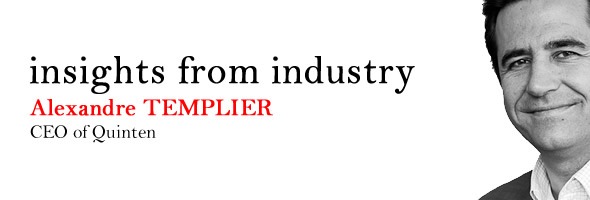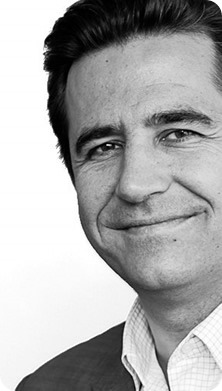
What is triple negative breast cancer (TNBC)?
Triple negative breast cancer (TNBC) is a type of cancer that has none of the three markers that are currently used for targeted chemotherapy. These markers are estrogen receptor (ER), progesterone receptor (PR) and HER2.
When you have one of those you can have a targeted treatment, if you don’t you have a triple negative breast cancer.
How many people does TNBC affect?
Roughly about 500,000 people per year are diagnosed with TNBC. If you look at the figures on the World Health Organization you can see that TNBC accounts for about 15-25% of all breast cancers. Also breast cancer itself accounts for about 20% of all cancers.
An estimated 12.7 million new cases of cancer per year are diagnosed and around 7.6 million people die from cancer in the same period.
What treatments are currently available for TNBC?
Usually they are treated with neo-adjuvant and adjuvant chemotherapy. These work quite well in terms of tumor response usually, however, the doctors have trouble correlating this with overall survival. The response to treatment is not close to 100%, it is more about 30% or so.
How does the success of these treatments vary between different individuals?
In fact TNBC has been shown by researchers to be very heterogeneous. So usually the specialists have seen that adding a Taxane to the chemotherapy does improve the outcome quite substantially.
Also BRCA1 related TNBC appears to be particularly receptive to chemotherapy with platinum based agents and Taxanes.
Please can you explain what biological markers are?
Biological markers is something you can measure from the body, usually blood or anything that is generated by the body, that could be an indicator of normal process or pathological process or about the response following a treatment.
Usually biological markers are known as “biomarkers”.
Please can you outline the two discriminating biomarkers that Quinten have recently identified for TNBC?
We actually identified within a cohort that was built in Clermont-Ferrand by Professor Nabholtz and his team two synergistic markers, which are respectively an epidermal growth factor receptor (EGFR) score higher than 80, and a percentage of cytokeratin 8/18 higher than 20.
They are associated with a 86% complete response rate, which is around two times more than average. These patients were representing about 30% of the whole cohort we studied.
Were these biological markers individually useful?
No they were not actually and that is why it is so important for us to highlight our ability to detect such synergistic markers. Patients having only one of those markers did not show any significant difference in terms of response compared to the whole database.
How did Quinten identify the interaction between these two biological markers for TNBC?
Alexandre Civet, one of our data scientists did that just like we do all our missions, by using our Q-Finder algorithm and our methodology – it works as well on TNBC as on any other type of cancer or any other type of diseases.
How does Quinten’s Q-Finder algorithm differ from usual statistical modelling?
Our algorithm tests each and every combination of markers in a given data set in order to detect the subgroups of patients that show a far higher response than you can get in average in the database for the same number of patients. This results in what we call a “set of rules” which basically classifies patients into one of several specific behaviours. This is if we find such behaviours, which may not be the case in some databases.
This is actually very different from usual statistical modelling, which basically results in a single predictive model which sometimes can be used to derive some stratification variables.
How long does the Q-Finder algorithm take?
It all depends on the available calculation resources and of course on the volume of data to be explored. At the moment, based on the calculation power we have internally, it usually takes us between an hour or less and a few days of calculations. We don’t sell any software though, because this is not a press button approach. It does require a lot of human efforts before and after the algorithm works. A whole mission usually takes around 8 weeks.
What impact do you think the identification of the two discriminating biomarkers for TNBC will have?
It will all depend on the validation that will be performed by Professor Nabholtz and his team now. If the finding is validated through a prospective study and also correlated to overall survival and not only to complete response, this will definitely result in a targeted chemotherapy for TNBC.
How important do you think personalized medicine will be in the future of cancer treatment?
It is already very important in cancer treatment, e.g. the use of biomarkers in personalized medicine. Many cancer treatments are already targeted based on genetic tests.
I think it will become even more important in oncology and beyond. Our feeling here in Quinten is that people only exploit a very small proportion of the whole potential of their data.
There is a sentence that is very relevant in this context. Henry Ford in the 1920’s said “half of my advertising investments are useless, but I don’t know which half.”
Actually you could say that medical doctors at the moment are in quite the same situation. Basically they know that half the patients that they treat will not respond, but they don’t know which half.
I think the revolution to come in personalized medicine is the same as the revolution you can see with raising big data. It is not about the sector or applications; it is really about getting the most of the data which is available.
What are Quinten’s plans for the future?
During the last 4 years we have developed about 12 different applications for the pharmaceutical and cosmetic sectors. We have a nice and steady portfolio of returning customers.
So now we plan to build upon these achievements and extend our market coverage beyond France and amplify investments in our team and technology.
Also we are looking for ways to develop new sectors. Although, life sciences is a very big sector to keep growing.
Where can readers find more information?
https://www.quinten-health.com/
About Alexandre Templier
 Dr. Alexandre Templier, Engineer, PhD, MBA: Co-founder, Chief Executive Officer. Alexandre has over 12 years of experience as an innovator and entrepreneur in life sciences. With a special interest in the contribution of information technologies in optimisation of decisions in complex environments, Alexandre has devoted his career to apply engineering sciences in helping medical professionals to provide better treatments.
Dr. Alexandre Templier, Engineer, PhD, MBA: Co-founder, Chief Executive Officer. Alexandre has over 12 years of experience as an innovator and entrepreneur in life sciences. With a special interest in the contribution of information technologies in optimisation of decisions in complex environments, Alexandre has devoted his career to apply engineering sciences in helping medical professionals to provide better treatments.
Alexandre holds a PhD in biomechanics from the Ecole Nationale Supérieure d’Arts & Métiers Paris Tech, and an MBA from the Institut d’Administration des Entreprises de Paris (Institute of Business Administration, Paris). He has been an associate lecturer at ENSAM- Paris Tech since 2001.